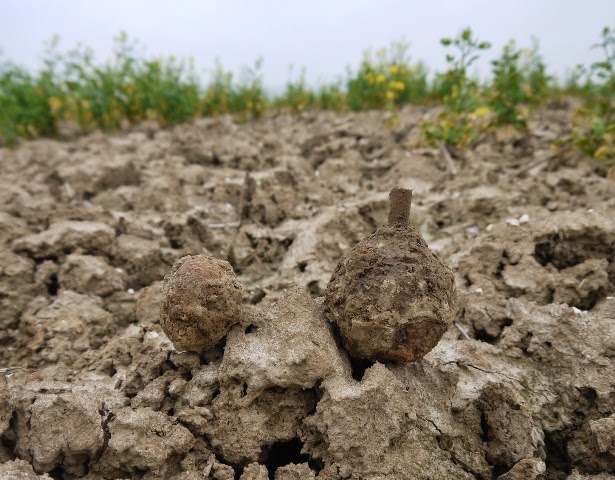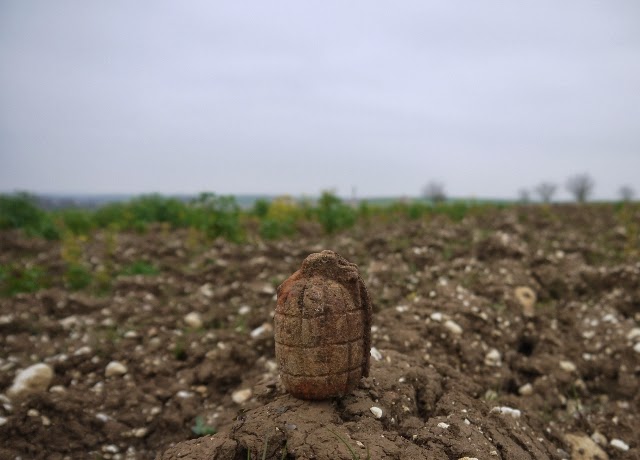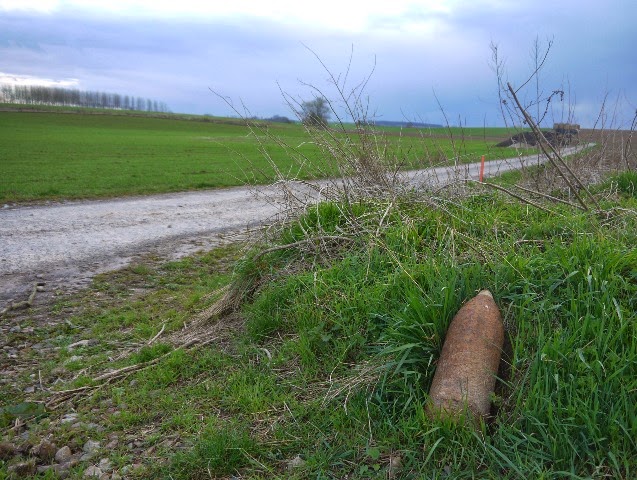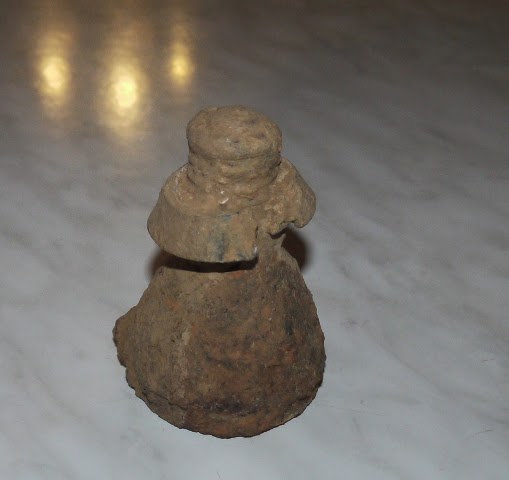Another visit to the Somme with my brother this March, with some good finds in the fields. Nearly 100 years on, the so called "Iron Harvest" of relics never ceases to amaze me. These are only the things that turn up on the surface, what must be lying a few feet deep??
A roll of rusting barbed wire
A British rifle grenade, that someone has hung up in a bush, like a strange Christmas tree decoration! Back of Mouquet Farm.
German egg grenade, still showing black paint finish. This is the later model with the serrated band around the grenade, improving the throwers grip. Serre.
German ball grenade (Kugelhandgranate), Serre
Relic British SMLE Rifle, found Leipzig Salient.
A pair of German grenades, an egg and ball grenade, Ovillers
Two images of a German 77mm shrapnel shell. Montauban.
German HE shell
Two images of a remarkably well preserved British Mills bomb, Ovillers.
British 18pdr HE shell with a No.106 fuse. The No.106 fuse was much more reliable than the No.101 fuse, so unusual to find one of these intact!
Two images of a Royal Canadian Regiment shoulder title, Courcelette. The RCR were in the Courcelette area during Sept/Oct 1916 and were involved in the fighting for Kerona and Regina Trenches on Oct 8th 1916. They secured most of their objectives but could not hold them as the troops on either flank were unsuccessful. Note that some of the cloth still survives.
Bottom image is of the grave of a soldier from the Royal Canadian Regt, Private G Ritchie, aged 16 when killed, in Courcelette Cemetery
German 77mm HE shell, near Zollern Redoubt
HE shell, Gommecourt
Dump of German 77mm HE shells in front of High Wood
British 18 pdr HE shell. Note the smooth driving band (i.e. not rifled), which if this shell has been fired indicates the gun barrel was very worn
"LONDON" shoulder title from one of the battalions, 47th London Division, involved in the attack on High Wood, Sept 15th 1916.
British 4.5" Howitzer HE shell, with High Wood in the background.
British 18 pdr HE shell and two 3" Stokes mortar rounds, with High Wood in the background.
British 4.5" Howitzer HE shell and German 77mm HE shell.
Above: A German 77mm gas shell with Trones Wood in the background. The bottle is an example of a one for a 77mm shell which contained the gas in a liquid form, placed inside the shell.
Oil bottle for the British SMLE rifle, Maricourt.
French trench mortar bomb (Torpille a ailettes), missing its fins, Maricourt
British 3" Stokes mortar round, Pozieres
British 4.5" Howitzer HE shell, Boom Ravine
A collection of German screw pickets and other relics, Boom Ravine. Bottom image shows a German entrenching tool and gas mask filter.
Rolls of barbed wire, Boom Ravine
Complete German 77mm HE round, including the propellant charge (in this case in a steel case and not brass), Boom Ravine
Two images of a "The Kings Own" (Royal Lancaster Regt.) Cap badge, Serre. The second image shows the badge on the memorial to two German soldiers and an unknown British soldier from the King's Own found in October 2003. The 1st Battalion Royal Lancaster Regt were involved in the attack on Serre on 1st July. The battalion War Diary notes that as "the advance commenced the Bttn. came under heavy machine gun fire and there seems no doubt that a large number of casualties occurred before reaching or own front line". This badge was found behind the British Front Line.
The bottom image shows the grave of of the casualties from the Kings Own on July 1st, Lance Cpl J McNamara, aged 22.
Serre was heavily fought over from 1915-1916 by first the French and then by the British. The above image shows a fraction of the remains we found in one field , including a British entrenching tool, handle of a French bayonet, the Kings Own Cap badge shown above, a complete bottle (probably for a paste), German, French and British buttons, British equipment buckles, British, French and German bullets. The field was littered with broken glass SRD jars, complete and fired bullets, shell fuses and cases, hand grenades etc.
Clips of British .303 rounds, Serre.
Large British HE shell (6" Howitzer?), vicinity of Bayonet Trench
Two images of a complete German "Ersatz" bayonet in its scabbard, funnily enough found in the vicinity of Bayonet Trench!!
Perhaps the strangest find of the week, a French 75mm shrapnel fuse that has landed straight through one of the rings that made up a British 18pdr shrapnel fuse!!











































Comments
Post a Comment